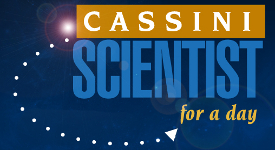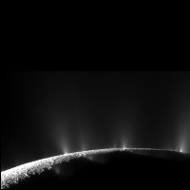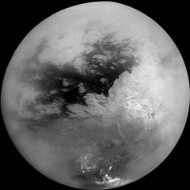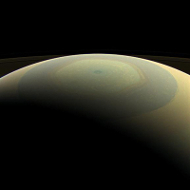Be a 'Cassini Scientist for a Day' – 2016/2017 competition is open
9 December 2016
The 'Cassini Scientist for a Day' competition returns for a 2016/2017 edition. The competition is designed to give the participants a taste of life as a space scientist. Students are invited to submit a 500-word essay explaining their choice of one of three targets imaged by the Cassini spacecraft, in orbit around Saturn, over the past few years.Be a Cassini Scientist for a day
To enter the competition, school students (10 – 18 years old) from participating countries need to find out as much as possible about the beautiful planet Saturn, its fascinating features, and mysterious moons. Students must then choose one of the three targets imaged by Cassini and write an essay to justify their choice to a panel of experts.
European competition
 |
Entries are welcome from students in any of the ESA Member States and ESA Cooperating States participating in the 2016/2017 competition, namely: Austria, Belgium, Czech Republic, Denmark, Estonia, Finland, France, Germany, Greece, Ireland, Italy, the Netherlands, Norway, Poland, Portugal, Romania, Slovakia, Spain, Sweden, and the United Kingdom.
The closing date for the competition in these countries is 23:59 CEST, 3 April 2017.
Essays must be submitted to the appropriate national organiser who will select the winners for that country.
Contact details for the national organisers can be found here.
Winners of the competition held in the participating ESA Member States and Cooperating States will receive a special ESA goodie bag and certificate of participation. In addition, the winning essays will be published on the ESA website.
Which of these three targets would you choose?
To enter the competition, students should study each of the three targets that Cassini has imaged and decide which one they think will yield the best science results. Students must explain their choice in an essay of up to 500 words and describe what they hope to learn from the image. The three targets are:
Competition details
Essays will be judged in the following age categories:
10 – 12 years old
13 – 15 years old
16 – 18 years old
Entries will be accepted from individual students or from teams of up to four students.
Each student or team may submit only one entry.
Cassini-Huygens mission
The Cassini-Huygens mission is an international endeavour between NASA, ESA, and the Italian Space Agency (ASI). In 2004, after a journey of nearly seven years the spacecraft, comprising NASA's Cassini orbiter and ESA's Huygens probe, was the first to enter orbit around Saturn.
In January 2005, the Huygens probe touched down on the surface of Titan, one of Saturn's moons. This is the only landing to take place in the outer Solar System and the furthest from Earth.
The Cassini spacecraft is still in orbit around Saturn, providing scientists with an abundance of information about the giant planet and its moons. Now in its final phase, the Cassini mission has less than a year to go until the end of its second mission extension, called the ‘Solstice Mission’. The final orbits of Cassini, taking place in 2017, will be spectacular. The spacecraft will orbit closely to Saturn and its rings, before taking a final plunge into Saturn’s atmosphere on 15 September 2017.
A strong European involvement in the Cassini-Huygens mission
The Huygens probe was developed by ESA, and many European countries were involved in the development of the 12 instruments on-board the Cassini orbiter. Data returned to Earth by the Huygens probe, along with data from the on-going Cassini mission, are studied by hundreds of scientists from around the world. Many of the scientists participating in this international mission of exploration and discovery are European.
Contact information
Rebecca Barnes
Communications, Outreach and Education Group
Directorate of Science, ESA
Email: sciedu![]() esa.int
esa.int
Nicolas Altobelli
ESA Cassini-Huygens Project Scientist
Email: nicolas.altobelli![]() sciops.esa.int
sciops.esa.int



